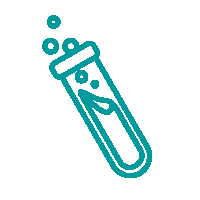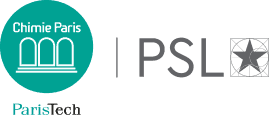

Nitric Oxide NO: from the discovery of its biological roles to the challenges of its electrochemical determination in vivo.
Dr Fethi BEDIOUI, Directeur de Recherche CNRS, Institute of Chemistry for Health and Life Sciences, CNRS 8060, Chimie ParisTech-PSL, Paris
Cliquez ici lien pour rejoindre le séminaire
Abstract
Nitric oxide, NO, is one of the ten smallest molecules found in nature and interest in its direct and real-time measurement originated from studies of its role as physiological messenger and cytotoxic agent in several biological systems. Indeed, biologically, NO was first characterized in 1987 as endothelial-derived relaxing factor and it was reported that it is produced by endothelial cells in blood vessels and diffuses to the adjacent smooth muscles to cause vasodilatation. Since this initial report that resulted in R. F. Furchgott , L. J. Ignarro and F. Murad receiving the Nobel Prize in Physiology and Medicine in 1998, there has been an explosion of research activity showing that NO release occurs not only from endothelial cells but also from neuronal, tumoral and immune system cells etc. The huge and intense research activities in these fields have resulted in more than 204 000 papers being published in the literature during the last 15 years. Many of the numerous properties of NO – that enable it to carry out its diverse physiological functions – also present considerable problems when attempting its detection and quantification in biological systems. NO is a free radical – that reacts very fast with oxygen, peroxides, O2-radicals (superoxide O2•-) and metals (and metalloproteins). This explains its fleeting existence and extremely low concentrations in biological systems .
The only strategies that allow direct, real time, label free and in vivo detection of NO, O2•- and their associated product ONOO– are those based on the use of ultramicroelectrodes. Indeed, micro electrode design and fabrication are now reaching very high levels of sophistication, hence actively contribute to the promotion of the use of electrochemical techniques for in vivo NO, O2•- and ONOO– determination by offering the following characteristics: (i) good selectivity and efficient discrimination against other species with selectivity factors > 100; (ii) good sensitivity towards the desired analyte down to the nanomolar range; (iii) fast response within the millisecond scale time; (iv) long-term stability over 1-2 hours; (v) small size of around 10-50 µm to offer non invasive and non destructive close proximity to the site of release (single cells, organelles) and (vi) ease of handling.
The seminar will focus on an overview of the successes and challenges still faced in the detection of NO, O2•- and ONOO– in biological media. We provide a full discussion on the electrochemical analyses of each of these species and summarize the significant research contributions towards the development of sensors for individual and simultaneous detection of these species.
Fethi Bedioui works in research and investigations in the Higher Education sector for over 35 years. He received his Chemistry diploma in 1981 from “Chimie ParisTech”, Paris (France). He was awarded his PhD in Physical Chemistry in 1986 from “Université Pierre et Marie Curie”, Paris (France). He is currently a senior researcher in the CNRS, and his current research interests revolve around the development and the implementation of advanced molecular materials for electrocatalysis and electrochemical sensing devices for biologically relevant molecules (thiols, nitric oxide, peroxynitrite etc.). His scientific work is reflected in over 280 publications including books and book chapters (H index = 52). He is currently Head of the International Affairs at Chimie ParisTech
- This évènement has passed.
